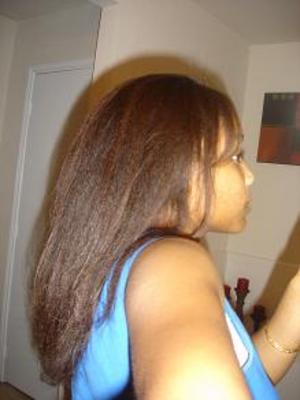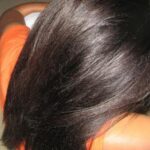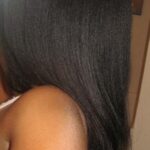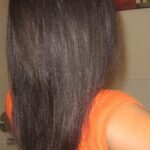Learning to Build a Regimen that WORKS
Feeling overwhelmed by the slew of information on hair care is almost a rite of passage when beginning a healthy hair journey. There are so many techniques and methods for doing everything, from daily moisturizing to airdrying and relaxing. The options are endless. Your regimen, in order to be successful, should contain products that work together to address your two most important hair needs: moisture and protein. It should be basic, flexible, and be able to evolve based on your ever-changing hair needs.
The key to building a solid regimen is finding your own hair tolerance. The information in this article will help you develop the solid foundation you need to successfully build your healthy hair regimen.
One Size Does Not Fit All
As you progress in your hair knowledge, you will soon discover that very few things about hair care are sound gospel. Even the tips in this article are only presented as guides and suggestions to help you on your way! The simple fact is that hair is seasonal. Our hair experiences changes from day to day and week to week depending on a myriad of influencing factors including: humidity, hard water, and bitter cold or sizzling hot temperatures. Hair that was thoroughly moisturized and hydrated one week may become excessively dry and lifeless the next. A regimen that does not take these circumstances into consideration is ultimately a recipe for failure.
Let’s Begin!
Now, I will introduce you to the important factors you must consider when choosing the products to support your hair growing regimen. There are two main types of product categories: protein based products and moisture based products. A rule of thumb is: The more you do to your hair chemically, the more of both protein and moisture you will need. The following sections will briefly outline the basic product components of healthy hair regimens based on these categories. A more indepth understanding of protein and moisture and their usefulness for the hair can be found here.
***************************************************************************
Now that you know what protein and moisture are, here is a sample of the regimen you will be building for yourself. You will select one or two products from each category below. A list of product examples or suggestions is also included below, but keep in mind that this list is by no means exhaustive. There are just far too many products to list! Building a good regimen also means that you will need to experiment with a wide variety of products before you find The Ones! You will need:
1 Moisturizing Shampoo:
This product should be used once or twice weekly depending on your schedule. The best moisturizing shampoos are sodium/ammonium lauryl sulfate free and do not leave the hair feeling stripped, tangly, or squeaky, squeaky clean. These shampoos are gentle cleansers that leave the hair feeling soft and detangled.
Examples: Crème of Nature (red and green label) Shampoo, Neutragena Triple Moisture Cream Lather Shampoo, Softsheen Breakthru Shampoo , Dax Vegetable Oil Shampoo, Kenra Moisturizing Shampoo, Design Essentials Moisture Retention Conditioning Shampoo, Aveda Sap Moss Shampoo, Queen Helene Mint Julep Shampoo, Elucence Moisture Benefits Shampoo, Aubrey Organics, Abba Creme Moist shampoo, Neutrogena Triple Moisture Shampoo, Elasta QP creme conditioning shampoo, Jason Natural, Salon Selectives Completely Drenched
1 Clarifying Shampoo/ and or Chelating Shampoo if you are a swimmer or have hard water:
This product should be used once per month, or twice per month if you use heavy products/greases oils quite often. Clarifying shampoos strip the hair of product buildup and are great for starting the hair off fresh each month. Your hair will and SHOULD feel squeaky, squeaky clean after clarifying.
Examples: Kenra Clarifying Shampoo, Pantene Pro-V Purity Shampoo, Infusium 23 Moisturizing Shampoo, Suave shampoos (entire line), V05 shampoos (entire line), Shampoo Three’ by Paul Mitchell, Aveda Detox, RESOLVE® Chelating Shampoo from Joico, Elucence Moisture Acidifying Shampoo, Nexxus Aloe Rid Shampoo, Nexxus -Phyto Organics Kelate Purifying Shampoo, Ouidad Water Works Shampoo, Artec Texturline Daily Clarifying Shampoo
1 Moisturizing and 1 Protein- based Deep Conditioner:
This should follow your moisturizing shampoo at every wash. Use of your protein or moisture based product should depend on what your hair needs at the time. (See my Hair Breakage article for more details on this topic.) I recommend deep conditioning for 30-45 minutes once per week, preferably with heat (hooded dryer). If you wash your hair twice weekly, only one of those washes need to be a deep conditioning. You can simply apply your deep conditioner for 10-15 minutes with or without heat for that second weekly washing.
Examples: (Moisturizing) Crème of Nature Nourishing Conditioner, Herbal Essences Replenishing Conditioner, Nexxus Humectress, Kenra Moisturizing Conditioner, Dove Intense Moisture, Neutragena Triple Moisture Daily Conditioner, Neutragena Triple Moisture Deep Recovery Mask, Elucence Moisture Balancing conditioner, Keracare Humecto, Mizani Moisturefuse, Elasta QP DPR-11 (Protein) Any Instant Conditioner like Suave and V05 (light/mild), Got2B Soft 1 Minute Emergency (light/mild), Rusk Sensories 60 second Revive (light/mild), ORS replenishing pak (light/mild), Garnier Fructis Long N Strong (mild), Motions Moisture Silk Protein conditioner (mild), Aubrey Organics GPB (mild/moderate), Mane N tail (moderate/heavy)
Protein Treatments:Used for rebuilding the hair. Frequency of use depends on the strength of the treatment you are using and the level of damage you are attempting to correct. Please follow manufacturer’s instructions for these products! Some protein reconstructors have specific time schedules and directions for use. Select one (1) protein treatment on the light to mild end of the spectrum for light touch ups and select another (1) protein treatment on the moderate to heavy end for more intense protein conditioning. Protein reconstructors should be followed by moisturizing deep conditioners to restore moisture and pliability to the hair.
Examples: Joico K-Pac (mild), Aphogee 2 Min Keratin Recon. (mild/moderate), Elasta Qp Anti Breakage serum, LeKair Cholesterol (mild/moderate), Motions CPR(mild/moderate), Nexxus Emergencee (moderate), Nexxus Keraphix (moderate), ORS Mayo (moderate), Elucence Extended Moisture Repair, Affirm 5 n 1, Dudley’s DRC (heavy), Aphogee Treatment for Damaged Hair (heavy)
Leave In Conditioner (1 Moisturizing and 1 Protein): Used after washes, or may be used as a daily water-based moisturizer!
Examples: (Moisture) Neutragena Triple Moisture Silk Touch Leave in, Profectiv Anti-Tangle Leave In, Kenra Daily Defense (Protein) Infusium 23, Cantu Shea Butter Leave In, Salerm 21(moisture w/ protein), Mane N Tail (Conditioner can also be used as leave in), Profectiv Break Free Leave In, Elasta QP Oil Recovery Moisturizer
Water-Based Moisturizer (1 Moisturizing and 1 Protein): Used for daily moisture supplementation. The best water-based moisturizers are products that do not contain mineral oil, petrolatum, or lanolin. I recommend moisturizing the hair once or twice per day, at night before bed and once again in the morning.
Examples:(Moisture) Organic Root Stimulator (ORS) olive oil, ORS carrot oil, Luster’s S-Curl, StaSoFro, Hollywood Beauty Carrot and Olive Oil, Most Braid Sprays, all of the leave in conditioners mentioned above can double as moisturizers! (Protein) Cantu Shea Butter Break Cure, Cantu Shea Butter Grow Strong, Elasta QP Mango Butter, Cantu Shea Butter Leave In Conditioner, Profectiv Mega Growth, Profectiv Healthy Ends, Salerm 21
Natural Oils: Used for sealing in water based moisturizers and helping improve the shine and pliability of the hair. Simply apply a light coating of the oil to the ends of the hair first, and work your way up. A dime sized amount should be enough for your entire head of hair. You don’t want limp oily hair!
Examples: Coconut oil, Olive oil, Almond oil, Jojoba oil, Sweet Almond oil, Carrot oil, Tea Tree Oil, Castor Oil, Vatika Oil, Amla Oil
Essential Oils (optional):Scalp stimulants! These must be diluted in a heavier, carrier oil because they are extremely potent. Sweet almond and jojoba are my carrier oil favorites. Only a few drops need to be used. per application They can also be added to conditioners, moisutirzers, leave ins, and shampoos. They are great for scalp massages, and very regimen friendly!
Examples: Rosemary, Peppermint, Thyme, Ylang Ylang, Lavender, Cedar Wood
Other hair tools:
Wide and medium toothed seamless comb
A boar or soft bristle brush- (optional)
Hair pins/clips
Rollers
Satin Scarf, Bonnet, and or Satin Pillowcases (for night care)
Plastic Shower Caps (for deep conditioning)
A pair of shears (be sure that they are only used for hair)
A ceramic flatiron *optional* (and heat protectant product)
Protective Styling
Protective styling should be part of any hair growing regimen. A protective style is any style that reduces hair manipulation/combing, cuts back on heat use, or keeps the hair up and off of the shoulders. Buns, spiral curls, rollersets, braids, twistouts, and clipped up/updo styles are all examples of popular protective styles. Some ladies wear protective styles daily, while others reserve these styles for certain days during the week. Keeping the ends protected from the elements is absolutely essential for faster hair health and growth results, so I advise protective styling the hair more often during the week than not.
Heat Reduction
Another critical component for building a healthy hair regimen is reducing your heat use! Heat destroys protein bonds in the hair and depletes your hair’s moisture content. Frequent use of heating tools, even with heat protectants, can spell disaster for your hair. Hooded dryers offer the safest heat you’ll find, but even those have hot spots that may damage your hair over time. If you must use heat, only use one heating implement at a time. and ALWAYS use a product that specifically states that it is to be used for heat protection. For example, air dry your hair and then flatiron, or blow dry your hair and then bun it up. Limit your use of heat to once weekly, or less if possible.
Sit Back and Take an Honest Look
Just as it is equally important to know which methods to incorporate and use, you must also know when to stop and re-evaluate your methods. When something is not working for you, your hair will let you know either by feeling dry, breaking, or not showing any new length after a given time. It may take you weeks or even months of trial and error to get your regimen customized enough for you to start showing some progress, but it will come. For many of us, it took years of mishandling to get our hair to the place it was, so it will take time to get it back on track! Hope you found this article to be a great starting point!
Good Luck!






